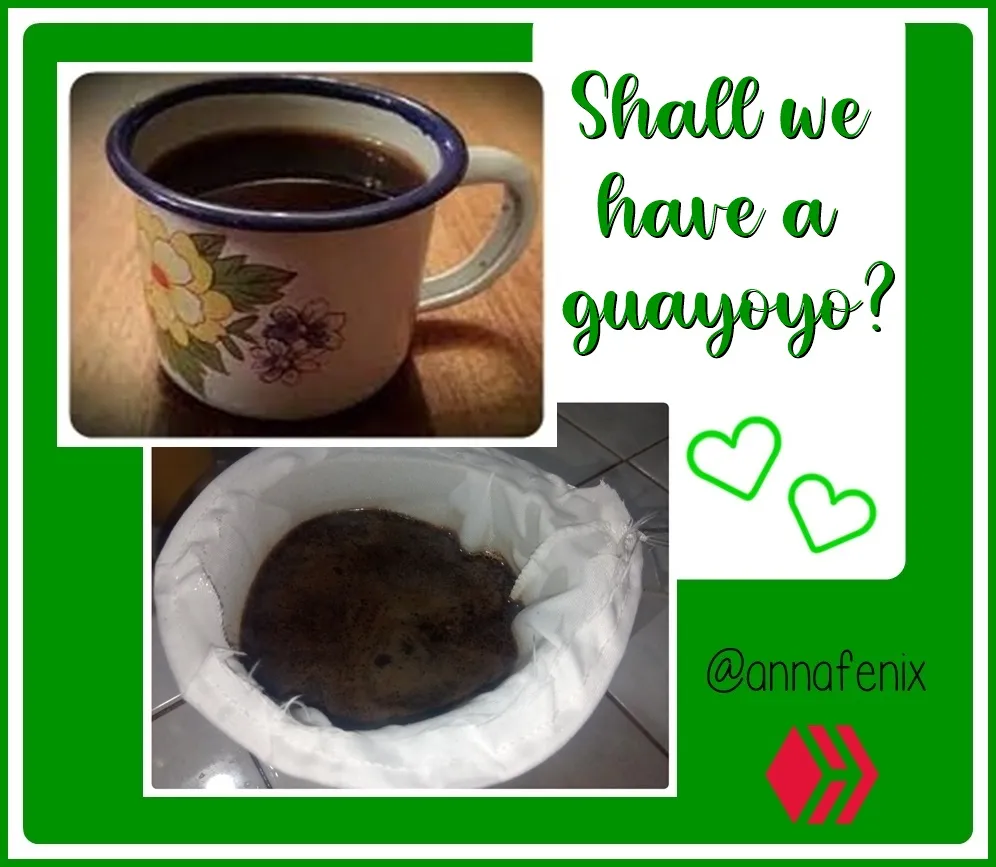
Buenos días mis #hivers mañaneros. Por aquí los acompaño con un delicioso cafecito llanero recién colao. Es que así inician las mañanas en el llano, con un “guayoyo” bien calientito. ¿Saben lo que es un guayoyo? Muchos quizás no lo saben y hoy quiero hablarles de ese delicioso café que se prepara en el campo.
Good morning my morning #hivers. Here I accompany you with a delicious coffee llanero freshly colao. It is that this is how the mornings begin in the plain, with a very warm “guayoyo”. Do you know what a guayoyo is? Many may not know it and today I want to talk to you about that delicious coffee that is prepared in the field.

El guayoyo es un café suave y clarito que se prepara en Venezuela. Se elabora en un colador de tela con aro y asa de metal o de plástico. Este colador se coloca sobre un atril o directamente sobre una jarra, se le agregan los ingredientes directamente que son café en polvo, azúcar o papelón rallado, y agua hervida. El colador recibe otros nombres como filtro de tela, o manga de colar; el guayoyo también se conoce como cafecito llanero, café claro, o café colao.
Guayoyo is a light and smooth coffee that is prepared in Venezuela. It is made in a fabric strainer with a metal or plastic ring and handle. This strainer is placed on a lectern or directly on a jar, the ingredients are added directly, which are coffee powder, sugar or grated paper, and boiled water. The strainer receives other names such as cloth filter, or strainer sleeve; Guayoyo is also known as cafecito llanero, light coffee, or colao coffee.
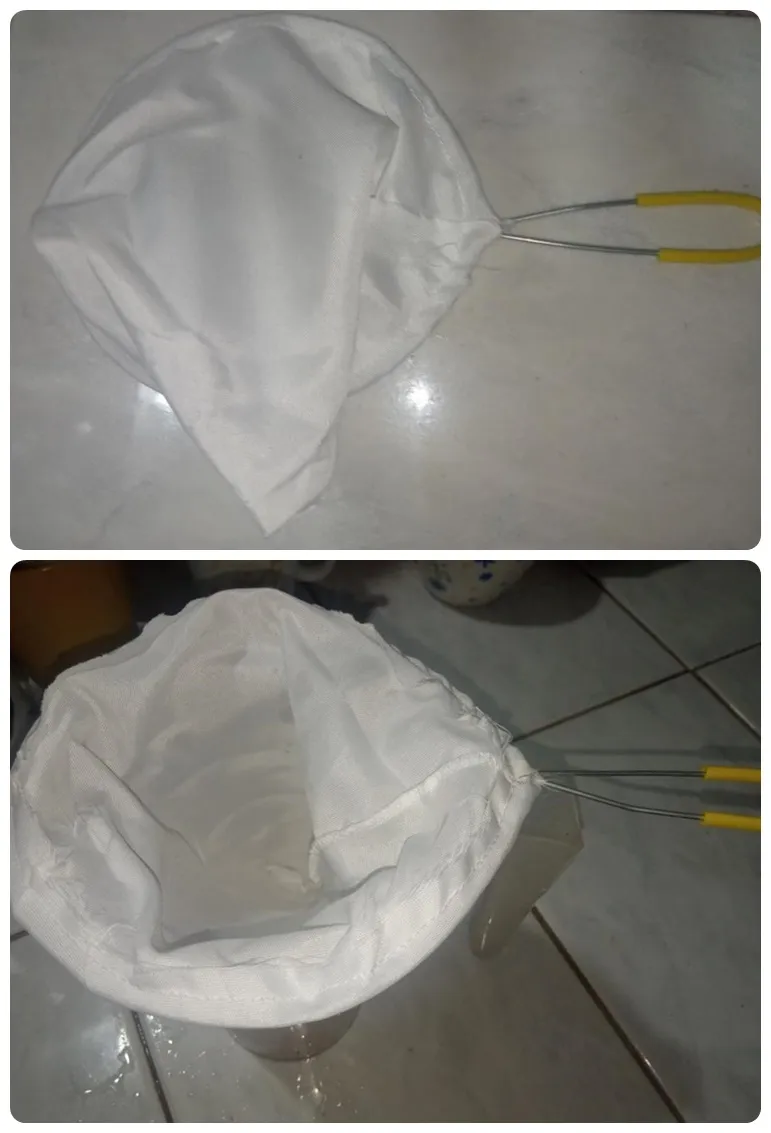
Personal file
En el llano se sirve en muchos recipientes, y los más populares son el pocillo de peltre y la totuma. La totuma es un envase elaborado con el fruto del mismo nombre que al sacarle su contenido se deja secar la concha y ésta se endurece quedando para ingerir bebidas. El guayoyo también se puede tomar en tazas de cerámica o plástico, eso es lo de menos, lo importante es su sabor. Los llaneros lo endulzan con la panela de papelón rallado, pero en la mayoría de los hogares simplemente se le coloca azúcar al gusto.
In the plain it is served in many containers, and the most popular are the pewter well and the totuma. The totuma is a container made with the fruit of the same name that, when its content is removed, the shell is allowed to dry and it hardens, leaving it to ingest drinks. The guayoyo can also be taken in ceramic or plastic cups, that is the least of it, the important thing is its flavor. The llaneros sweeten it with grated brown paper panela, but in most homes, sugar is simply added to taste.
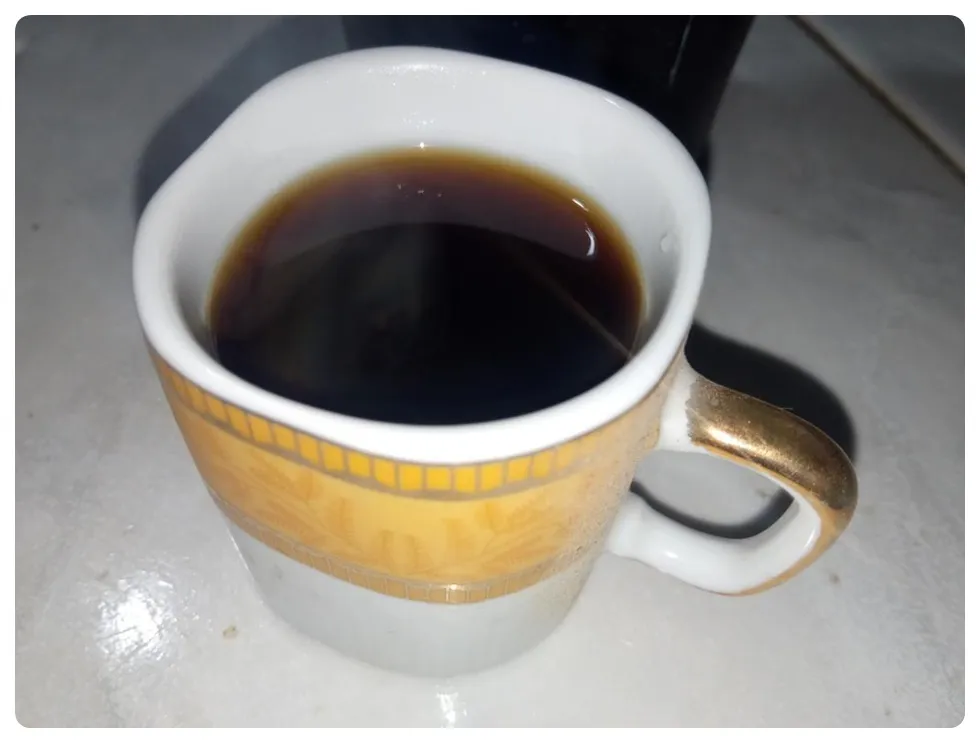
Personal file
Si hay algo que evidencia que el guayoyo se elabora seguido es cuando el colador nos dice adiós. Éste es mi colador viejito que ayer tuve que botar y reemplazar por uno nuevo, ya no aguantaba más remendadas. Este otro es ahora mi colador de batallas diarias, espero me dure un poco más. La jarrita que uso y que compré especialmente para él ya está curtida, y les cuento que la mancha del café no se le quita con nada. Pero mejor así, eso la hace más típica.
If there is something that shows that guayoyo is made often, it is when the strainer says goodbye. This is my old colander that yesterday I had to throw away and replace with a new one, it couldn't take any more patching. This other one is now my daily battle strainer, I hope it lasts a little longer. The mug that I use and that I bought especially for him is already seasoned, and I can tell you that nothing can remove the coffee stain. But better this way, that makes it more typical.
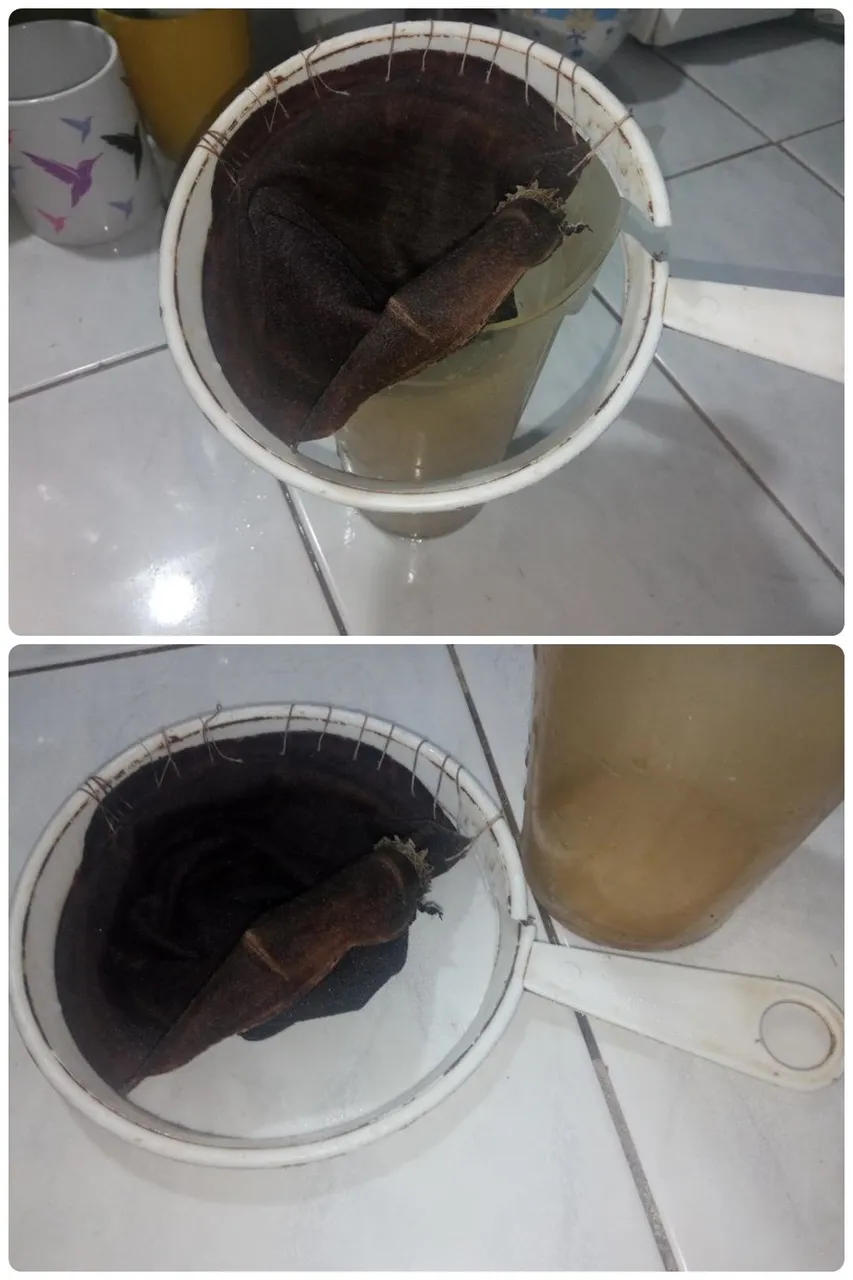
Personal file

Les comparto mi receta para un guayoyo sencillo:
- 2 tazas de agua hervida
- 2 cucharadas de café en polvo
- 1 cucharada de azúcar
I share my recipe for a simple guayoyo:
- 2 cups of boiled water
- 2 tablespoons of coffee powder
- 1 spoon of sugar

Se coloca el café y el azúcar en el colador de tela, se le agrega el agua hirviendo y se deja reposar tapado por 3 minutos. Se sirve y a disfrutarlo.
Place the coffee and sugar in the cloth strainer, add the boiling water and let it rest covered for 3 minutes. Serve and enjoy.
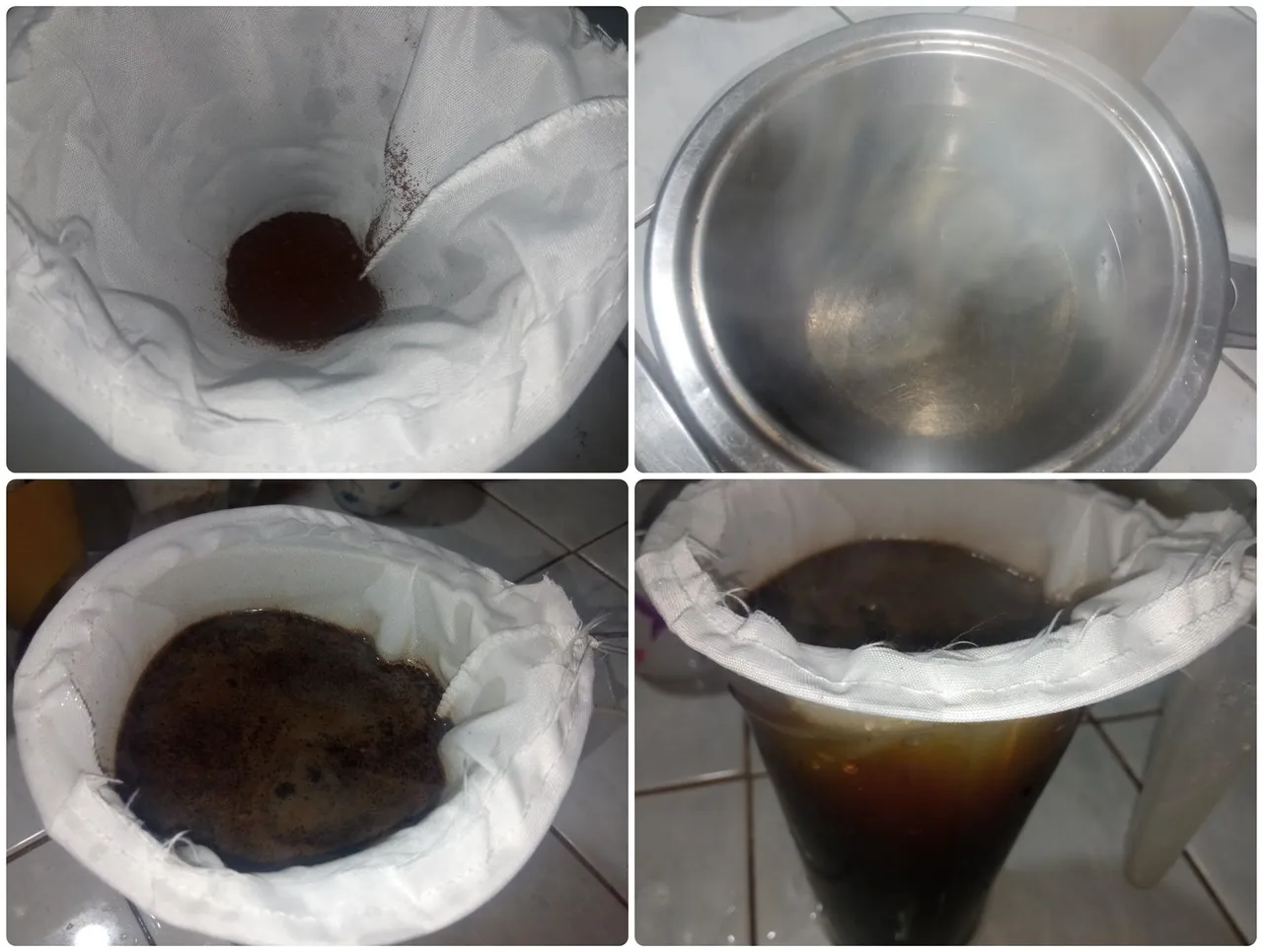
Personal file
No hay nada más delicioso que un guayoyo recién colao en pocillo de peltre con un pancito para acompañar la merienda de las tardes. Les comparto esta imagen de mi amigo, el poeta y profesor Héctor Méndez, llanero de Barinas. Si hay alguien que disfruta y promueve el guayoyo como parte de la cultura del llanero, es él. Y yo amo estas tradiciones porque forman parte de mis raíces, de mis costumbres, porque si hay algo de lo que me siento orgullosa es de ser llanera.
There is nothing more delicious than a freshly strained guayoyo in a pewter pot with a roll to accompany the afternoon snack. I share this image of my friend, the poet and teacher Héctor Méndez, plainsman from Barinas. If there is someone who enjoys and promotes the guayoyo as part of the llanero culture, it is him. And I love these traditions because they are part of my roots, of my customs, because if there is something I am proud of, it is being a llanera.
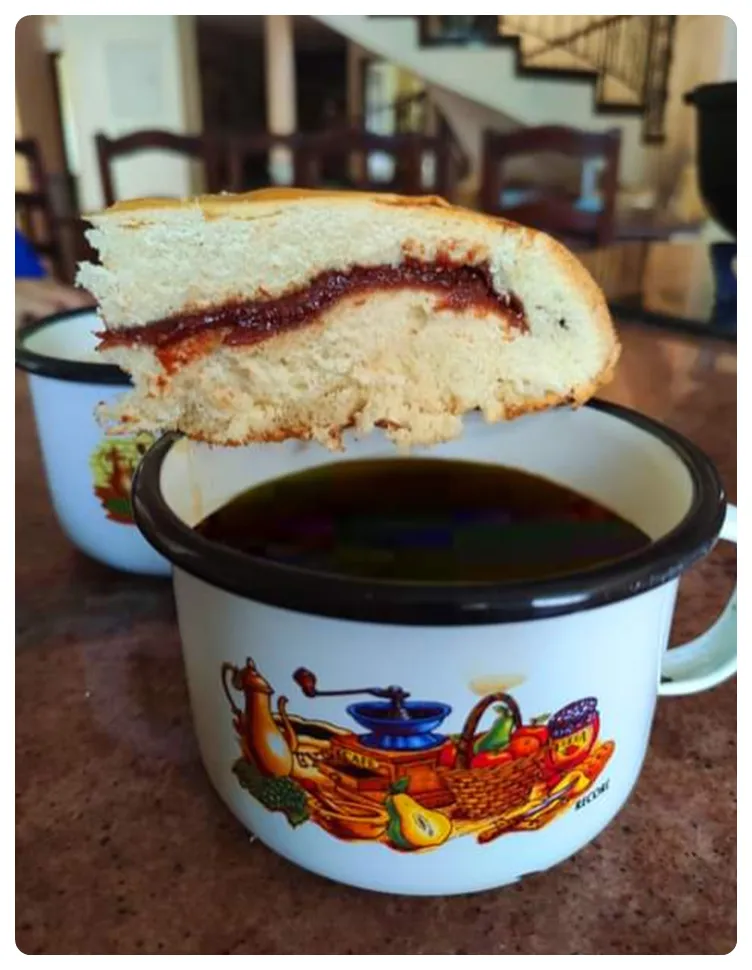

Gracias por visitar mi blog. Espero que disfrutes de esta publicación y me gustaría que dejaras tu opinión. ¡¡Feliz domingo!!
Thank you for visiting my blog. I hope you enjoy this publication and I would like you to leave your opinion. Happy Sunday!!

SOURCES OF INFORMATION USED:
- El Guayoyo (Diccionario Venezolano):
https://diccionariovenezolano.com/guayoyo/


